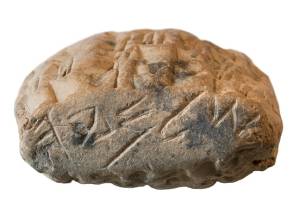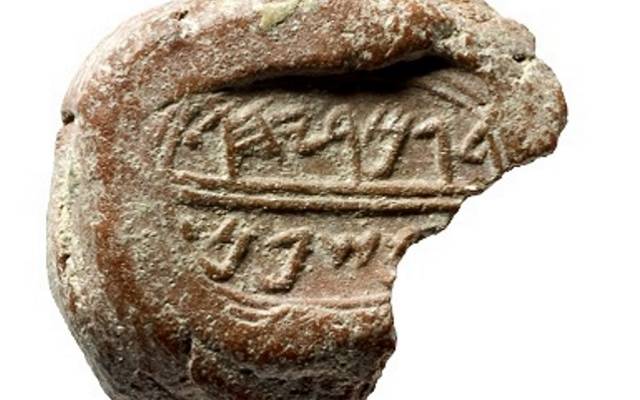
A rare Babylonian clay tablet. (Photo: Clara Amit, courtesy of the Israel Antiquities Authority)
A new exhibit of rare artifacts on display in Jerusalem sheds light on a period in Jewish history long shrouded in mystery.
A new exhibit at the Bible Lands Museum in Jerusalem offers a glimpse of the lives of Jews who lived through the Babylonian exile, including the tragedy and the redemption, more than 2,500 years ago.
The exhibit covers the Babylonian period from 605 BCE, when the first exile most likely occurred, until 539 BCE, when it officially ended following the conquest of Babylonia by the Persians led by Cyrus the Great.
By telling the story of a particular family, the exhibit enables visitors to experience the destruction of Jerusalem, the grueling journey to Babylonia, the daily lives of the Judean exiles in captivity and, finally, the return to Zion.
For the first time ever, original artifacts dating back to the destruction of Jerusalem and the Babylonian exile are on display. The importance of the Al-Yahudu archive cannot be underestimated.
Of significant note, are clay tablets from the Al-Yahudu archive, named after the city in which the Judean exiles settled in southern Iraq. This archive is considered one of the most important and fascinating archaeological finds relating to the history of the Jewish people.
History’s understanding of this period has been greatly enriched and influenced by the recent discovery of approximately 200 tablets from Babylonia. Written in the Akkadian language in the cuneiform method, these texts offer unprecedented insight into the daily lives of the Judean exiles in Babylonia.
The earliest of these tablets was written in 587 BCE, 15 years after the destruction of Jerusalem. The exhibit documents the lives of the Judeans and their neighbors up until 477 BCE, the date of the latest text in the collection.
Dozens of Jewish names, many of them comprising the famous Judean theophoric element Yahu, are listed on these tablets.
Illustrations from the medieval and modern eras depicting these dramatic events, which have become a symbol of the resilience of the Jewish people, are on display as well.
A number of multimedia exhibits enhance the experience.
Land of Israel: The Jewish Home for Millenia
The Land of Israel is a natural bridge between the African and the European and Asian continents, not only in terms of territory, but also regarding different peoples, cultures, languages and religions. It has been the focus of much attention and the stage for many historical events that have shaped world history, as explained in a press release on the exhibit.
The Jewish People have called the Land of Israel their home for more than 3,000 years. It is where they were born, matured and became a nation. This process was often challenging and involved several defining events, including the Babylonian exile and the destruction of the First Temple in Jerusalem by Nebuchadnezzar II, which are two milestone events in this magnificent process.
The profound effects of the Babylonian exile were far-reaching. It transformed the Judeans into Jews, from many peoples into the People of the Book, and from a nation doomed for extinction into the perpetual survivor.
By: United with Israel Staff
